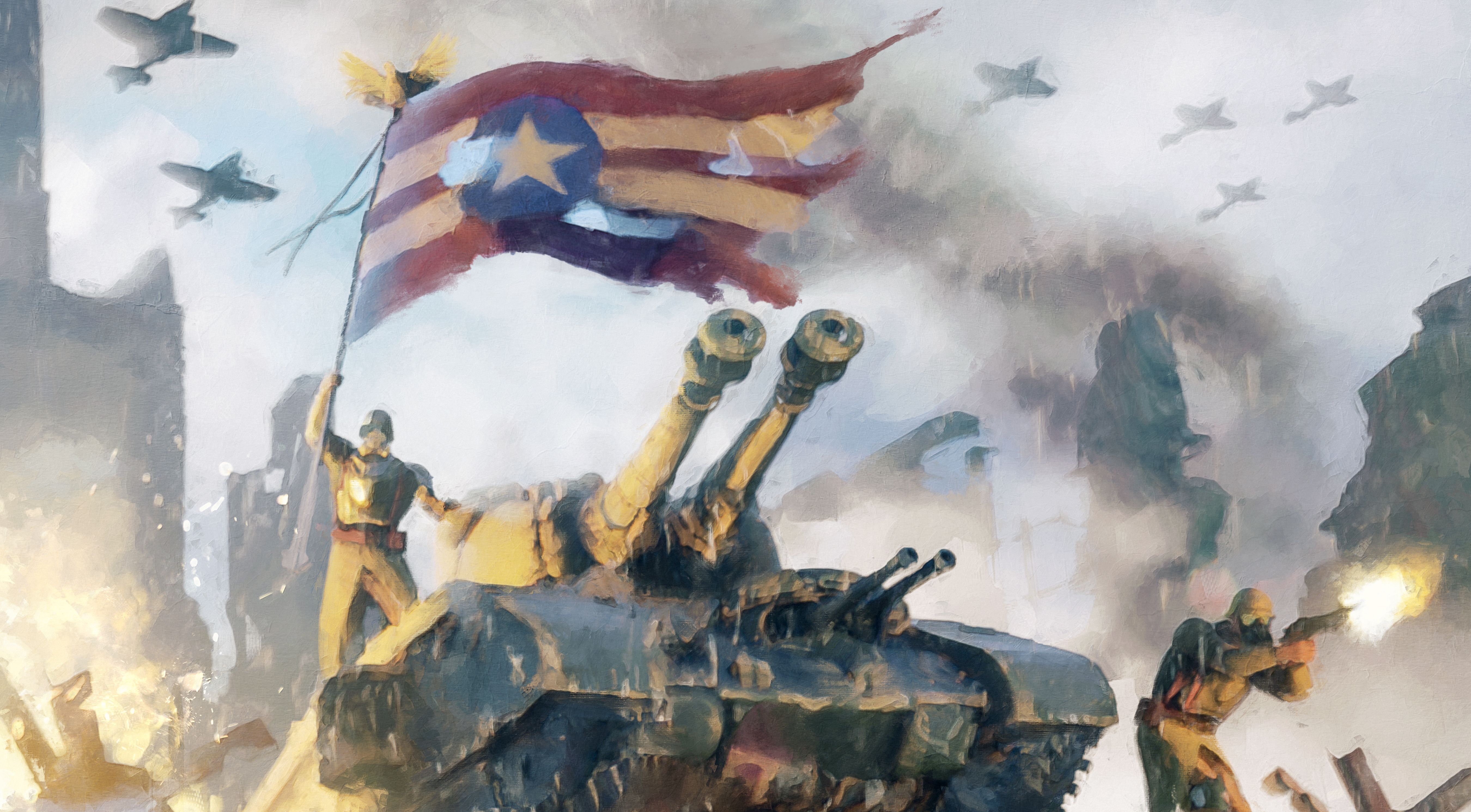Feu de Lis
When the Spanish invasion force under the command of General Franco advanced into French-held Aragon, they easily pushed through the ill-prepared border garrisons. Deploying twin advances from Madrid, the illegitimate “Aragonese 1st Army Group” entered their eponymous region from Ojos Negros and Ariza. Many of the small border towns on the road to Zaragoza quickly fell in the first 48 hours, with the local French troops still coalescing into the hastily structured 6th Army Group. Nominal command of the 6th was given to career politician and Secretary of the Aragonese Communist Party Fernando Abazin, who in spite of his minimal military experience was put in charge to oversee the transition away from the existing Bonapartist structure. The senior command in Aragon had for a long time been a stronghold for aging imperialist generals, and the Revolution saw a mass “retirement” of much of the local command.
At the time that Franco’s northern army pushed towards western Zaragoza on November 9th, all available armor was deployed to the front to crush the oncoming wave of Spanish troops. While they proved successful at repelling the regulars under Franco’s command, the clandestine paramilitary groups supporting him were able to flank them in the hills, sabotaging French vehicles at every opportunity. So while Abazin’s charge was able to slow the war progress down for a time, it was at the cost of most of the 6th’s heavy armor division. Given the chaos in the French industry following the Grande Révolution, replacement vehicles could not be readily sent to replenish their supply, and vehicles from the 1st Army Group on the Imperial Front would take time to arrive. This meant that troops in Zaragoza were left to fight the impending advance with nothing more than small arms, artillery, and an out of date shield generator.
To better fend off enemy advances into the city, the Catalan and Aragonese troops stationed in the city used what they had to stall further attempts to enter the city. They had an abundance of fuel, which had been imported in massive quantities from America in the weeks before the war. They found that mixing a small amount of olive oil into the flammable liquid made a volatile concoction that, when burning, would better stick to objects lit ablaze. This led to the prevalence of Zaragozan hold-outs using the mixture in makeshift grenades. As their previously bourgeois command center was in the Aljafería Palace, they often utilized emptied liquor bottles from the old fort’s cellar, typically decorated with the Fleur de Lis, synonymous with the Bourbon dynasty. Given the Spanish monarchy’s heritage, many troops saw the irony in the vessels chosen for their revolutionary fire bombs. This ultimately led to Abazin nicknaming the bottle bombs in one report, Feux de Lis, an obvious pun– Feu being fire in French.
While not always effective against shielded targets, the usage of a Feu de Lis in battle often proved effective, scaring off the infantry supporting advancing tanks enough for saboteurs to close in on the vehicles. It also often had the adverse effect of lighting ablaze entire neighborhoods around Zaragoza, destroying the city they were attempting to guard. That said, it allowed local troops to hold off the enemy, even as Franco’s army subjugated much of Aragon. Even after the city fell on December 3rd, the usage of the Feu de Lis remained a constant on the Catalan front, as even when tanks were running low they usually had the fuel and vitriol necessary to keep fighting for the revolution.




Comments